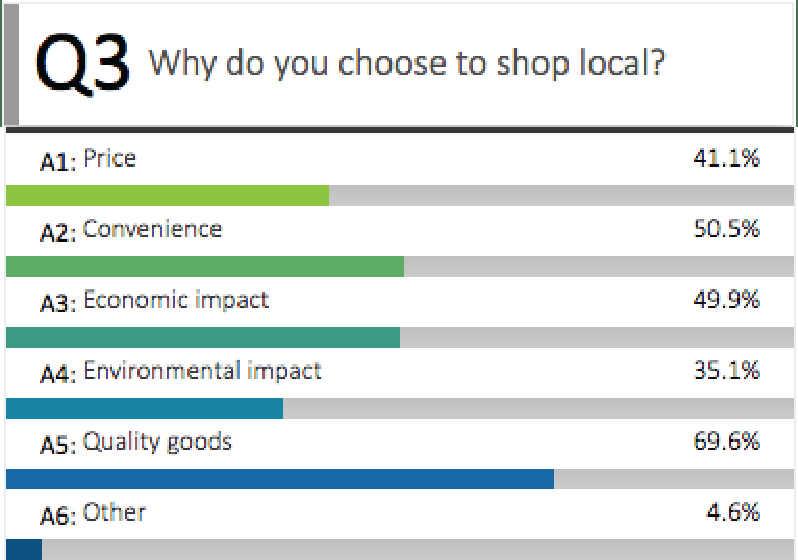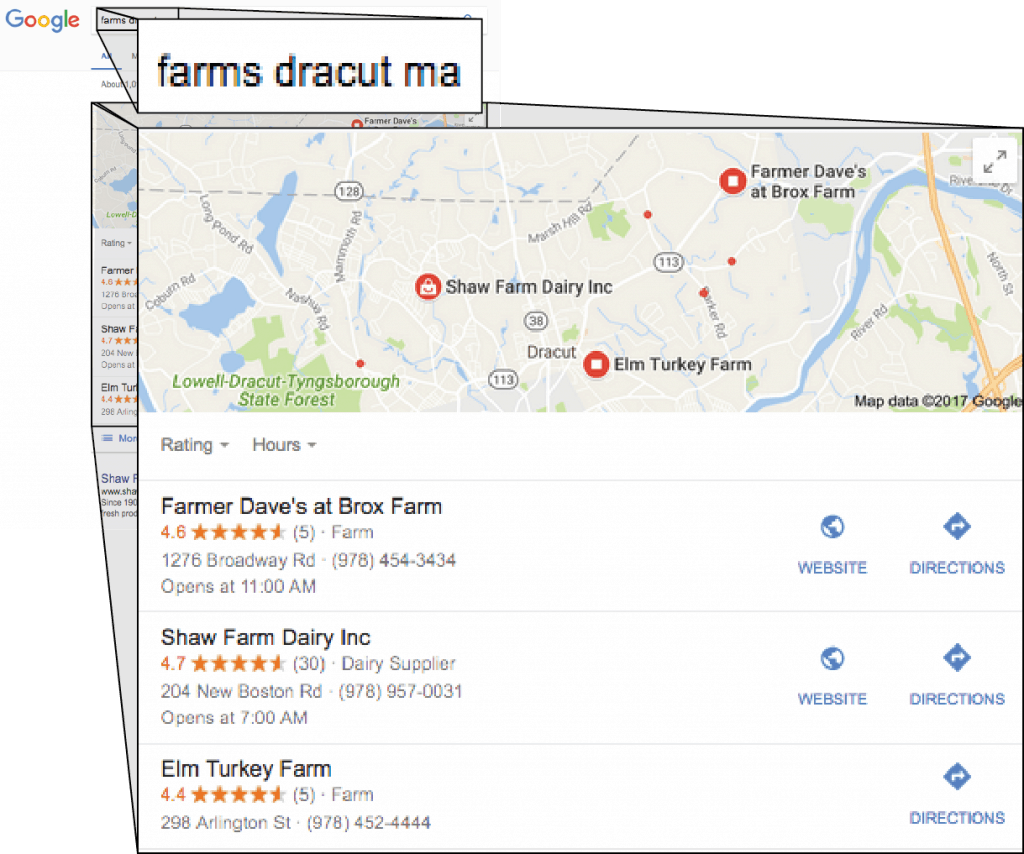 Small, locally-owned, independent businesses continue to struggle as more consumers purchase products and services online, but here are three ways that business owners can succeed in our ever-changing environment.
Small, locally-owned, independent businesses continue to struggle as more consumers purchase products and services online, but here are three ways that business owners can succeed in our ever-changing environment.
1) Leverage the “Buy Local” Advantage
A growing number of US consumers are choosing to buy from locally-owned stores, services and producers, with over a third (39.3%) of US consumers saying that they prefer to buy local whenever possible.[i]
Studies show that consumers buy local for a variety of reasons:
- They feel that local businesses provide better and more personalized customer service than national chains.[ii]
- They believe that locally produced products are higher quality.
- They want to support local vendors,[iii] help the economy, and help the environment.

In other words, you have a significant advantage over national chains and giant ecommerce stores, because a significant number of customers already understand and prefer the value and values that you offer. But in order to leverage this advantage, you must make it easy for “buy local” customers to find you.
Who are these target customers? They’re like to be established homeowners with strong ties to their community and an interest in health and the environment.[iv] To help these customers find and remember you, strive to be as visible as possible in your community, communicate about what you offer and have an active local presence, both in-person and online.
2) Offer a Superior Experience
Of course, giant online businesses and big box stores have many of their own advantages, so you have to find other ways to compete. The behemoths can usually offer bigger product selections, lower prices, and greater convenience than locally-owned businesses. They also use sophisticated marketing techniques to collect data about your interests and behavior, so they can send you “personalized” ads and messages enticing you to buy.

In contrast to this type of virtual personalization, with its creepy Big Brother feel, small locally-owned businesses can offer a more authentic and valued method of personalization. You can recognize—or at least personally greet–each customer. You should know who your best customers are and reward them with offers or services that make them feel special.
Customers look to small businesses for their taste, expertise and advice. If customers need assistance, you can help them figure out what they need, and recommend the best product. And if you can’t provide it, you can send them somewhere that can.
You can also offer a superior experience by offering free samples, demos, live entertainment, and other activities that make customers look forward to patronizing your business.
3) Make the Most of Your Online Presence
The Internet has been a mixed bag for small, locally-owned businesses. While ecommerce has helped put some brick-and-mortar retailers out of businesses, having an online presence has helped many small businesses attract customers who would otherwise never have found them.
Online search has become an essential part of the shopping experience, even for dedicated “buy local” shoppers, with majority of searches taking place on smartphones and tablets. Three-quarters (76%) of people who do a local search on their smartphone visit a store within 24 hours and 28% of those searches result in a purchase.[v]
Consumers frequently use a mixture of online and in-store activities to research and purchase products and services. While some shoppers visit stores and then buy online because it’s cheaper or the selection is better, the reverse is also true. In fact, a higher percentage of shoppers actually research online and then come to stores to make a purchase than vice versa.[vi]
You can increase the likelihood that customers will come into your store to buy by spotlighting the products or services you offer on your website, reviews sites, or social media, even if you don’t enable people to order or book online. Providing information and photos, showcasing the quality of your work, sharing customer reviews and testimonials, and highlighting your values and commitment to the community will all help bring them in.
It’s no longer optional: All businesses need an online presence if they want to survive.
Search engines actually provide an advantage to local businesses. Because so many people are searching for products and businesses via their smartphones, Google and other search engines have changed the way that search engine results appear. When someone does a local search, such as “clothing stores near me,” Google highlights the three local businesses that are the most relevant to the user on a Google map, with links to the businesses’ websites and directions.
 Google uses many criteria to determine which sites get highlighted, but taking steps to “optimize your website for local search,” is a must. In addition, your website must be “mobile-friendly,” meaning that it’s easy to read and use on a smartphone and that the pages load fast. (Google has a free test you can use to determine whether it considers your site mobile-friendly.)
Google uses many criteria to determine which sites get highlighted, but taking steps to “optimize your website for local search,” is a must. In addition, your website must be “mobile-friendly,” meaning that it’s easy to read and use on a smartphone and that the pages load fast. (Google has a free test you can use to determine whether it considers your site mobile-friendly.)
Google also likes to highlight websites that have claimed their free “Google My Business” listing. But you should also look for other online business directories and review sites where you can promote your business. In addition, solicit online reviews and try to be active on at least one or two social media channels.
Final note: As important as all these strategies are, most small businesses still attract the majority of their customers the old-fashioned way: A personal recommendation from someone that your prospective customer already knows and trusts. Great “Word of Mouth” will always be a competitive advantage.
[i] “Buying Local” – Survey by AYTM
[ii] “Yodle Insights: What Consumers Want from Local Businesses”
[iii] “How to Succeed in (Small) Business” – Toluda “QuickSurvey”
[iv] “Buying Local” – Survey by AYTM
[v] “I-Want-To-Buy-It Moments: Mobile’s Growing Role in a Shopper’s Purchase Decision” – Think With Google article
[vi] State of Retail 2017 Report – TimeTrade Survey



